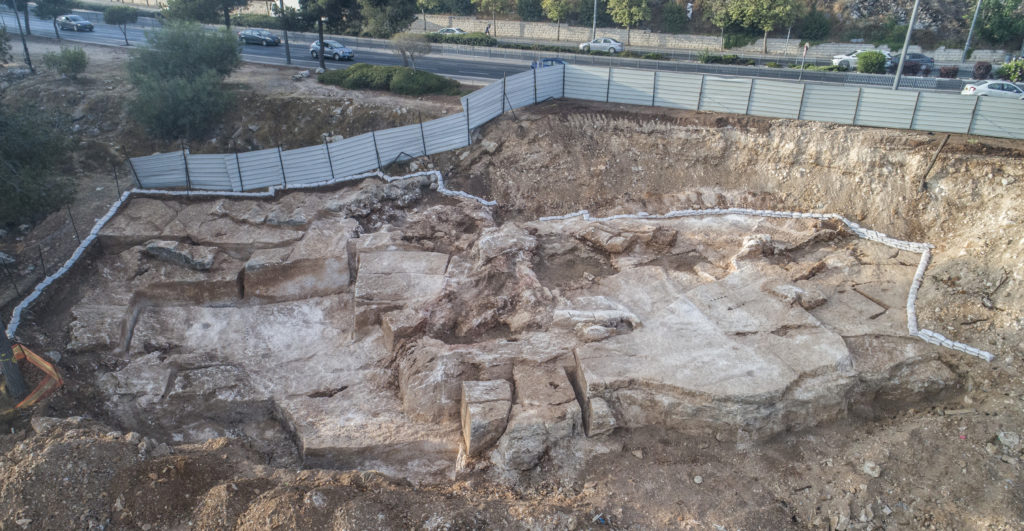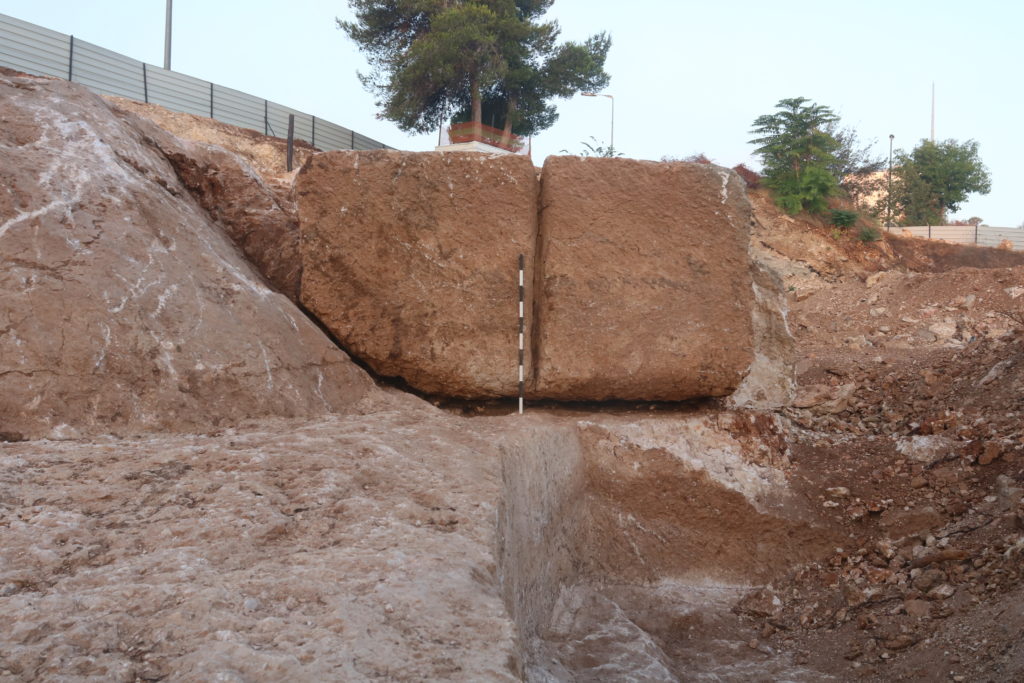
In Jerusalem, construction projects include an archaeological examination, to ensure that no historical artifacts are erased by the new building work. In an ironic twist, that review process for new construction recently unveiled a rock quarry site used for ancient construction from two thousand years ago. And in a place named “Quarrymen’s Hill” no less—or in Hebrew, ‘Har Hozvim’.
A press release from the Israel Antiquities Authority (IAA) said that not everyone knows why the location is called that, although it should be obvious now: It is the site of a “vast ancient quarry” that is thought to span as much as 1800 square meters (or more than 19,000 square feet). The site also includes the real prize for archaeologists, “massive building blocks” measuring 1.5 meters x 2 meters (roughly 5 feet by 6.5 feet).
“Building blocks in various stages of working were discovered in the quarry,” said Moran Hagbi, the excavation’s director on behalf of the IAA, in the press release. “For example, we uncovered large, square blocks of stone about to be detached from the bedrock, prior to loading and transporting them to the ancient city. For us as archaeologists, this quarry presents a golden opportunity; because some of the stones were left in situ in this way, we can copy ancient technologies and experiment with them in order to recreate the processes by which the building stones were quarried.”
The plan, according to the IAA, is to use reproductions of ancient tools to “try and recreate the ancient methods used to detach the stone blocks, as well as to test the effectiveness of methods described in ancient sources.” It’s like travelling back in time to see firsthand what construction would have been like 2 millennia ago.

While noteworthy, this isn’t the first ancient quarry discovered in Jerusalem. Citing the “region’s topography and the quality of the stone,” the IAA press release said the stone quarries were “the main source” of building blocks for major projects in Jerusalem during the Second Temple period.
“The large-scale building projects in ancient Jerusalem, such as the Temple Mount, required a vast amount of building materials and the ability to organize and coordinate the quarrying and transportation of thousands of building blocks to the ancient city,” the press release quoted Hagbi as saying.
It is both ironic and intentional that modern building in Jerusalem is helping archaeologists better understand that ancient process.
“In a symbolic way, Jerusalem’s current development boom presents us with an opportunity to excavate and research the great building projects in Jerusalem in antiquity,” the press release quoted IAA General Director Eli Eskozido as saying. “Before any development project begins in Jerusalem, our archaeologists are called upon to excavate and examine any ancient finds, for the sake of future generations.”
(By Joshua Spurlock, www.themideastupdate.com, September 5, 2021)
